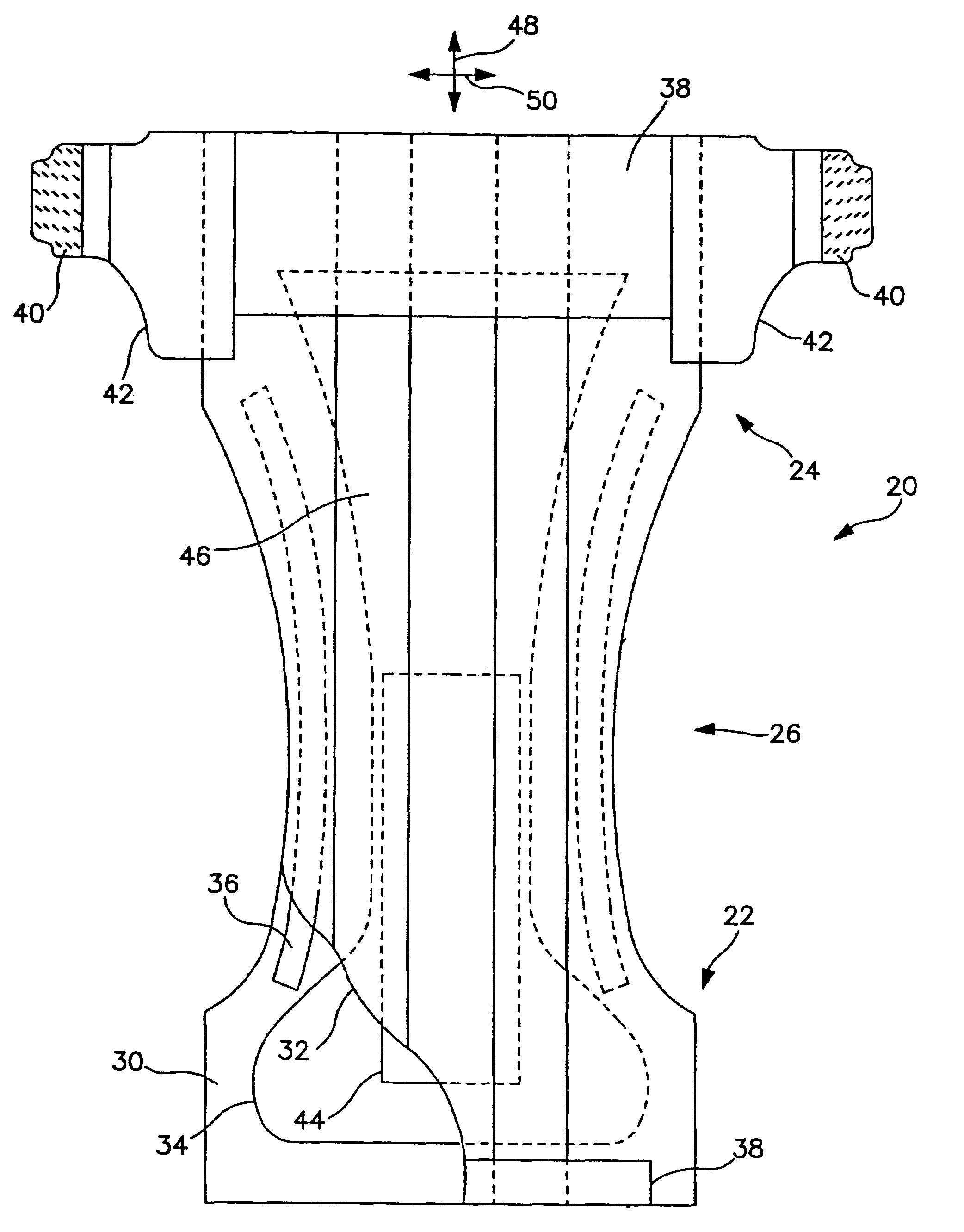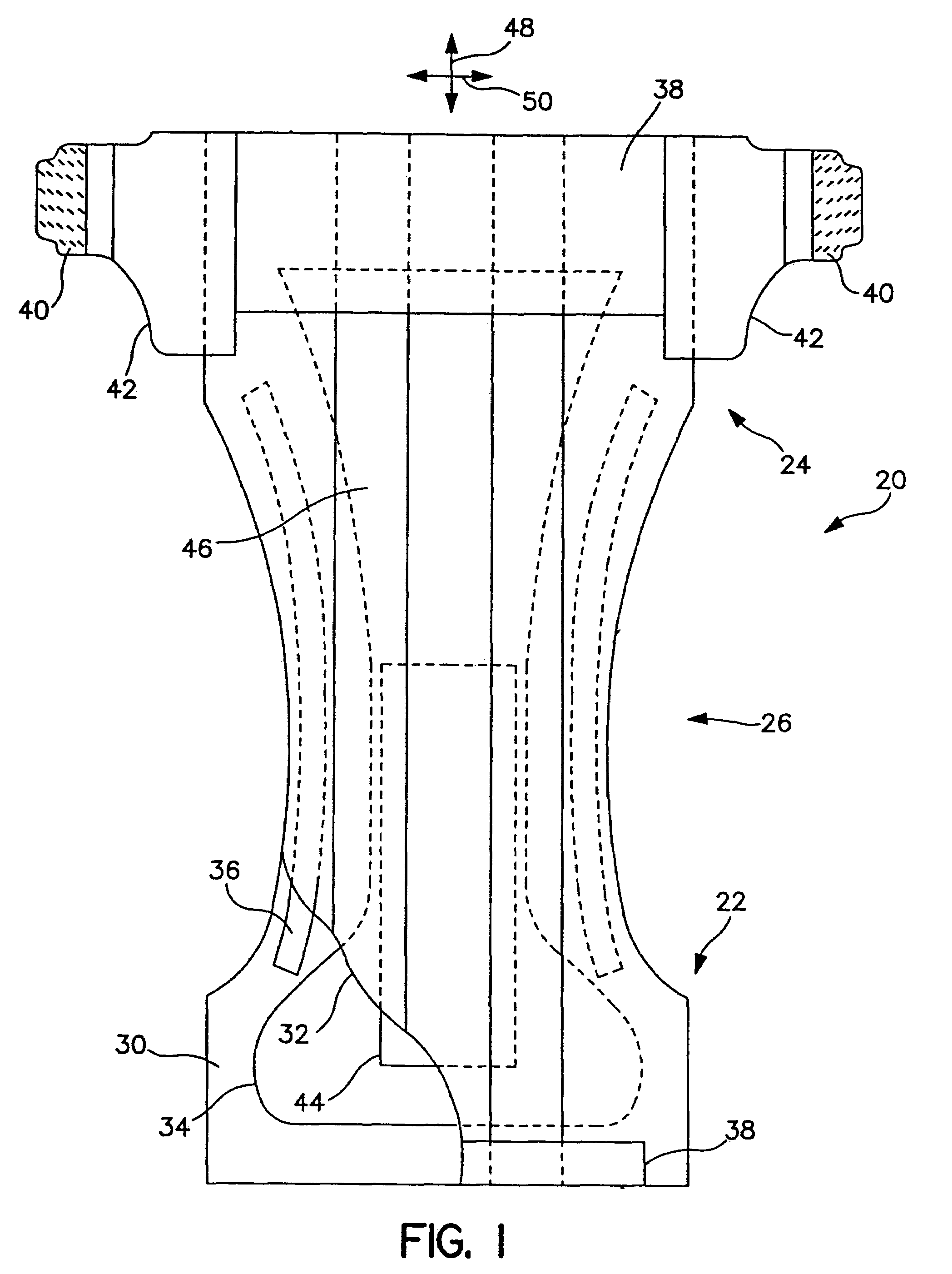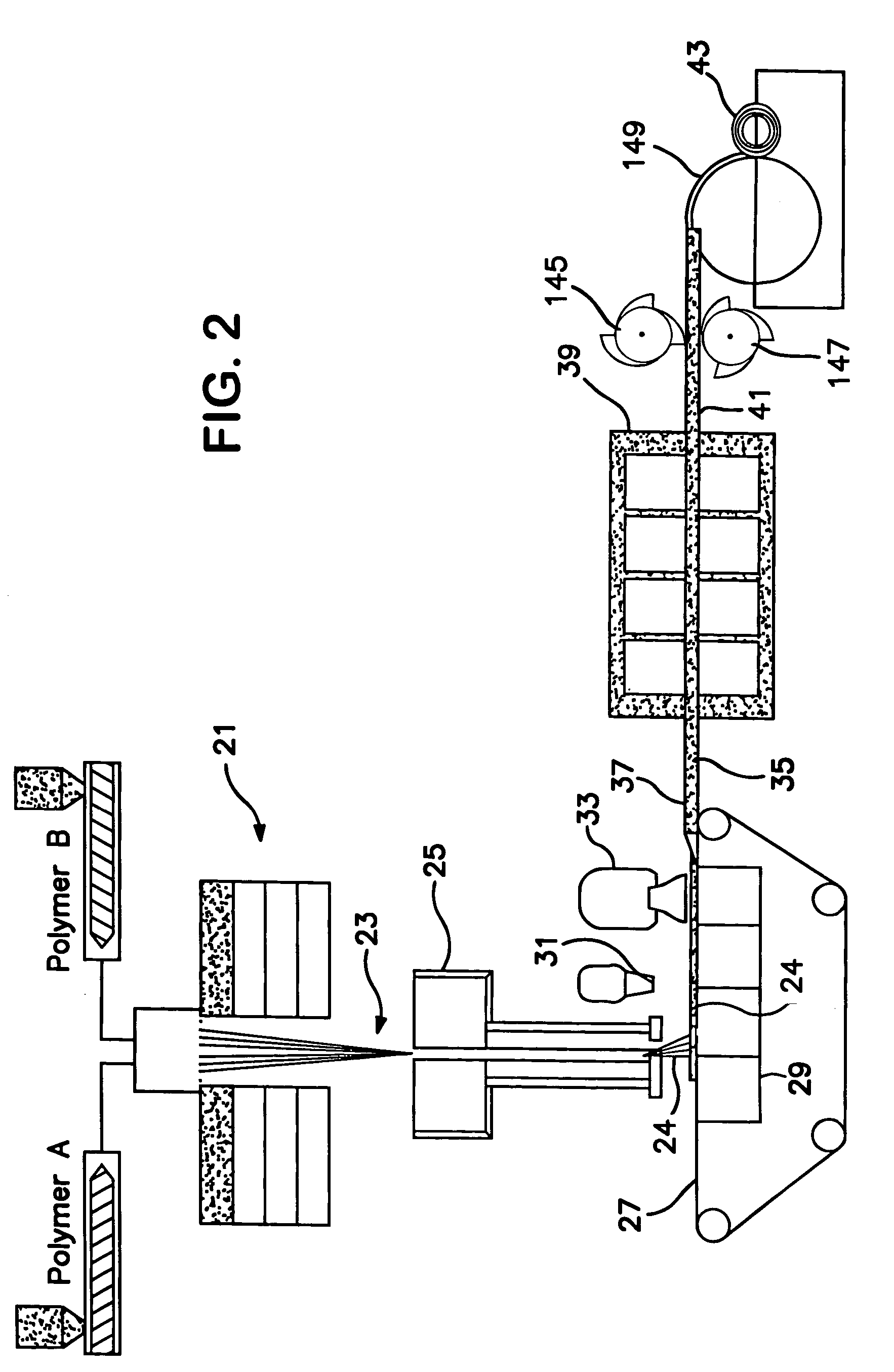Strong high loft low density nonwoven webs and laminates thereof
a low density, nonwoven web technology, applied in the direction of transportation and packaging, other domestic articles, synthetic resin layered products, etc., to achieve the effect of low density, high loft and improved processing
- Summary
- Abstract
- Description
- Claims
- Application Information
AI Technical Summary
Benefits of technology
Problems solved by technology
Method used
Image
Examples
example 1
[0130]Example 1, was produced according to the present invention to a basis weight of 202 gsm (5.96 osy), with a bulk of 12.6 mm (0.5 inch) and density of 0.016 g / cc. The average denier was measured to be approximately 3.3 dpf (denier per fiber). The fibers were side by side bicomponent, featuring polymer A of Dow 61800.41 polyethylene (PE) and polymer B of Exxon 3155 polypropylene (PP). A TiO2 additive from the Standridge Color Corporation, of Social Circle, Ga., tradenamed SCC-4837, was added to the polymer prior to extrusion at 2% by weight to provide white color and opacity to the web. The fibers were spun through a 96 hole per inch (hpi) spinpack, spinning in an A / B side by side (s / s) configuration, at a melt temperature of 410° F.
[0131]Throughput was balanced in a 50 / 50 throughput ratio between the two polymers, with a total throughput of 0.7 grams per hole per minute (ghm). The quench air temperature was 55° F. The fiber spin length was 48 inches. The fibers were drawn at 4.0...
example 2
[0133]Example 2, was produced according to the present invention to a basis weight of 79 gsm (2.33 osy), with a bulk of 3.8 mm (0.15 inches) and density of 0.021 g / cc. The average denier was measured to be approximately 3.3 dpf. Polymers and additives were the same as stated for Example 1.
[0134]Fiber and web formation conditions were the same as for Example 1 except the forming wire was moving at 220 ft / min, as measured on the forming wire. The HAK was set at 250° F. and 5.0 inches H2O of pressure on bank 1, and 240° F. and 3.5 inches H2O at a height of 5.0 inches above the forming wire. The below wire exhaust under the fiber draw unit was set to vacuum of approximately 1.7 inches H2O in bank 1, and 3.8 inches H2O in bank 2.
example 3
[0135]Example 3, was produced according to the present invention to a basis weight of 77 gsm (2.27 osy), with a bulk of 3.3 mm (0.13 inch) and density of 0.023 g / cc. The average denier was measured to be approximately 3.3 dpf.
[0136]Fiber and web formation conditions were the same as for.Example 1 except the forming wire was moving at 229 ft / min, as measured on the forming wire. The HAK was set at 250° F. and 5.0 inches H2O of pressure on bank 1, and 240° F. and 3.5 inches H2O on bank 2, at a height of 5.0 inches above the forming wire. The below wire exhaust under the fiber draw unit was set to vacuum of approximately 1.6 inches H2O in bank 1, and 3.8 inches H2O in bank 2. The web was bonded at approximately 262-269° F. in a through air bonder.
PUM
| Property | Measurement | Unit |
|---|---|---|
| densities | aaaaa | aaaaa |
| density | aaaaa | aaaaa |
| density | aaaaa | aaaaa |
Abstract
Description
Claims
Application Information
 Login to View More
Login to View More - R&D
- Intellectual Property
- Life Sciences
- Materials
- Tech Scout
- Unparalleled Data Quality
- Higher Quality Content
- 60% Fewer Hallucinations
Browse by: Latest US Patents, China's latest patents, Technical Efficacy Thesaurus, Application Domain, Technology Topic, Popular Technical Reports.
© 2025 PatSnap. All rights reserved.Legal|Privacy policy|Modern Slavery Act Transparency Statement|Sitemap|About US| Contact US: help@patsnap.com



